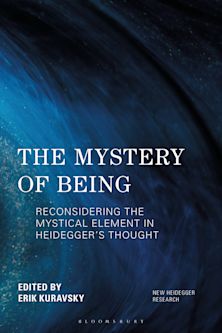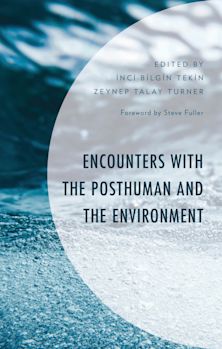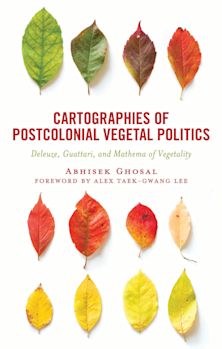- Home
- ACADEMIC
- Philosophy
- Philosophy - Other
- Earth Ways
Earth Ways
Framing Geographical Meanings
Gary Backhaus (Anthology Editor) , John Murungi (Anthology Editor) , Deepanwita Dasgupta (Contributor) , Robert Kirkman (Contributor) , Jason W. Moore (Contributor) , François-Xavier Nzi iyo nsenga (Contributor) , Lawrence A. Peskin (Contributor) , Dennis E. Skocz (Contributor) , Paul Steege (Contributor)
Earth Ways
Framing Geographical Meanings
Gary Backhaus (Anthology Editor) , John Murungi (Anthology Editor) , Deepanwita Dasgupta (Contributor) , Robert Kirkman (Contributor) , Jason W. Moore (Contributor) , François-Xavier Nzi iyo nsenga (Contributor) , Lawrence A. Peskin (Contributor) , Dennis E. Skocz (Contributor) , Paul Steege (Contributor)
This product is usually dispatched within 1 week
- Delivery and returns info
-
Free CA delivery on orders $40 or over
You must sign in to add this item to your wishlist. Please sign in or create an account
Description
What is the connection between anthropology, philosophy, and geography? How does one locate the connection? Can a juncture between these disciplines also accommodate history, sociology and other applied and theoretical forms of knowledge? In Earth Ways: Framing Geographical Meanings, editors Gary Backhaus and John Murungi challenge their contributors to find the location that would enable them to bridge their "home disciplines" to philosophical and geographical thought. This represents no easy task. Essayists are charged with building a set of conceptual bridges and what emerges is a unique co-joined topography; sets of ideas united by a painstaking and rigorous interdisciplinary framework. Earth Ways is a salient rendering of interdisciplinary thought in contemporary humanities and social sciences scholarship.
Table of Contents
Chapter 1 Herodotus and the Origins of Geography: The Strange, the Familiar, and the Earthbound
Chapter 2 Conceptualizing World Environmental History: The Contribution of Immanuel Wallerstein
Part 2 Framing Historical Contexts
Chapter 5 Rousseau in the Suburbs: Geography, Environment, and the Philosophical Turn
Part 6 Framing Substantive Theories
Chapter 7 Toward a Phenomenology of Cognitive Mapping
Chapter 7 A Contextualized Science and the Changing Landscapes of India: A Case Study of Science as a Graft
Chapter 8 The Die is Cast: Boundaries of Time, Boundaries of Space
Chapter 8 Pirates and the Geography of Knowledge: America and Algiers in the Late-Eighteenth Century
Chapter 9 The Geography of Material Culture and an Outline for Synergetic Geography
Part 10 Framing Case Studies of Specific Time-Places
Chapter 13 Finding the There There: Local Space, Global Ritual, and Early Cold War Berlin
Product details
| Published | Apr 03 2004 |
|---|---|
| Format | Hardback |
| Edition | 1st |
| Extent | 220 |
| ISBN | 9780739107645 |
| Imprint | Lexington Books |
| Dimensions | 228 x 156 mm |
| Publisher | Bloomsbury Publishing |
About the contributors
Reviews
-
It is always a pleasure to discover a book that pushes disciplinary boundaries in novel directions. Earth Ways forges new syntheses between philosophy and geographical ways of knowing and the result is a collection of thought-provoking, important essays. Advancing an interdisciplinary understanding of historical, theoretical and practical moments of dwelling, the authors seek to bring to light taken-for-granted assumptions and ways of "framing" that inevitably condition geographical and philosophical articulations of meaning. In addressing implicit ways of framing geographical meanings that are all too often ignored, the book charts an important new course.
Ingrid Leman Stefanovic, Associate Professor, Department of Philosophy, Director, Division of the Environment, University of Toronto
-
Not least among the strengths of this volume is its handsome bibliography on matters geographic and philosophic, its rich and provocative collection of notes at the end of each chapter, and its expansion of, and homage to, the explorations resident in a seminal work-Richard Hartsorne's The Nature of Geography.
Bridges
-
<p>This book of essays fills a very important void in environmental studies and environmental philosophy. It is a great effort at undoing the isolation of disciplinary study and provides a fresh way of thinking earth as a word-image for the ongoing dynamic inter-being of nature's life forms.<p> <p>One of the things that makes this work stand out is that the interdisciplinary character of environmental studies/philosophy is case-based, within an historical and cultural context. This makes all the difference!<p>
Kenneth Maly, Professor of Philosophy, University of Wisconsin - La Crosse
-
This book of essays fills a very important void in environmental studies and environmental philosophy. It is a great effort at undoing the isolation of disciplinary study and provides a fresh way of thinking "earth" as a word-image for the ongoing dynamic inter-being of nature's life forms.
One of the things that makes this work stand out is that the interdisciplinary character of environmental studies/philosophy is case-based, within an historical and cultural context. This makes all the difference!Kenneth Maly, Professor of Philosophy, University of Wisconsin - La Crosse


































